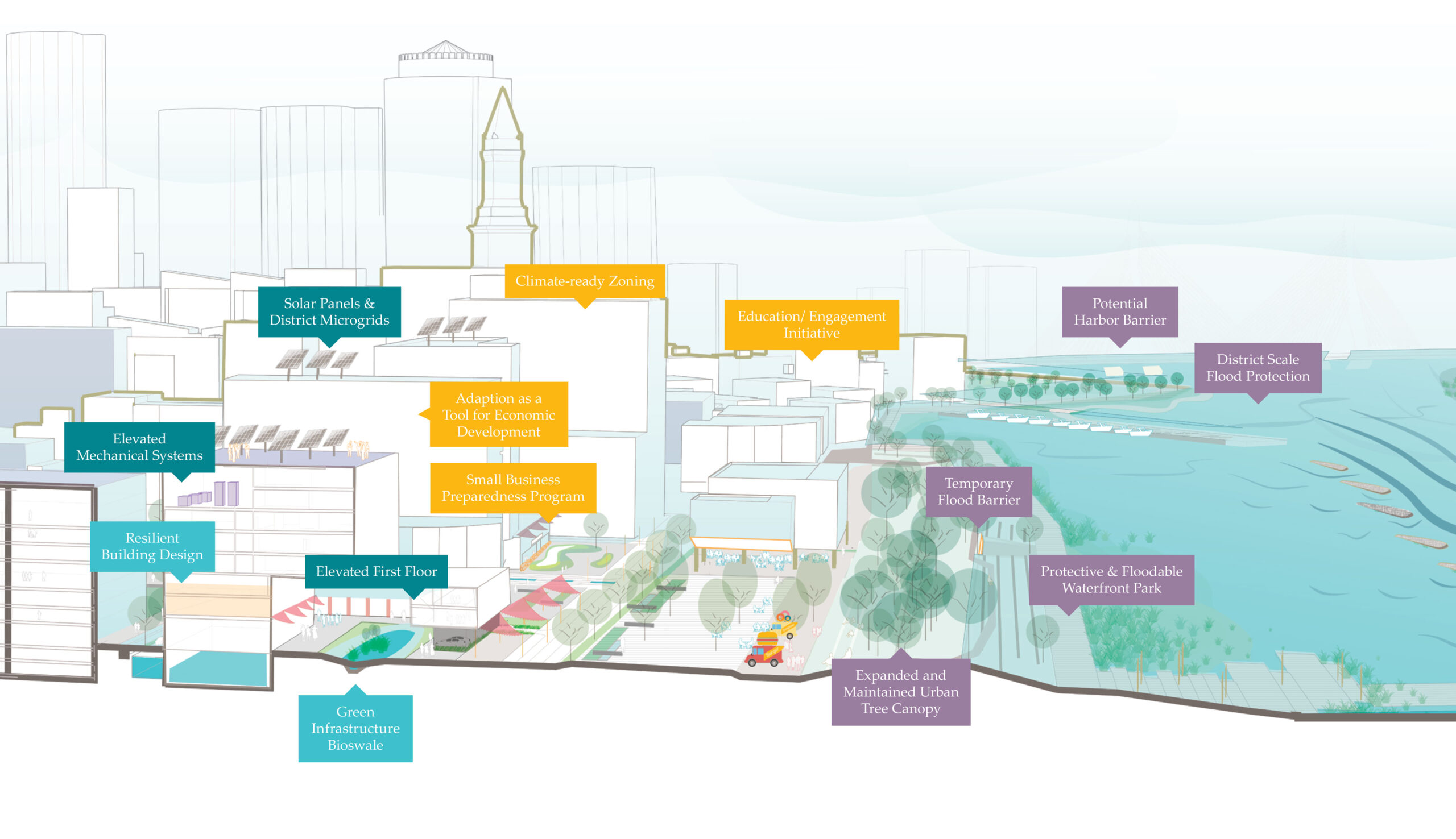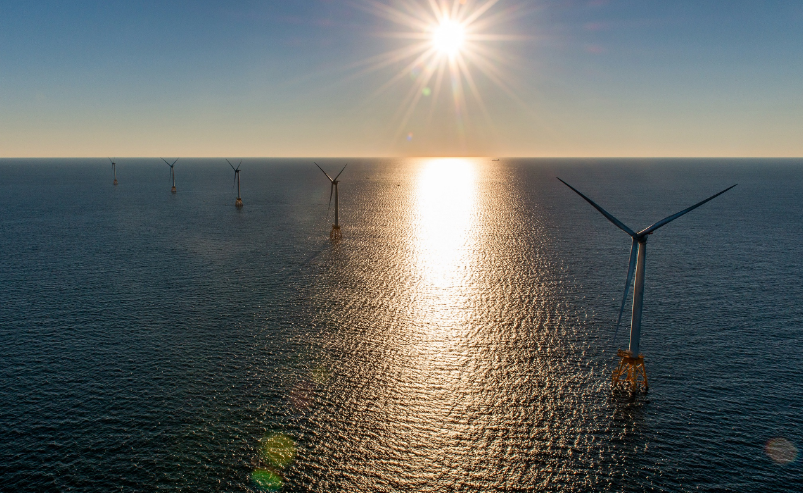Last month Climate Ready Boston released a new report—a year in the making—that greatly improves knowledge regarding the expected impacts of climate change and the people and places in the city of Boston who will be most vulnerable. Marking the end of the first phase of Climate Ready Boston, an initiative led by the City of Boston in partnership with the Green Ribbon Commission, and supported by Barr, this report provides both the technical foundation and an implementation framework for long-term climate preparedness.Among the report’s key findings are:
We will experience more intense rainfall and more extremes of heat.
These changes are already underway; “cloudbursts” (sudden, heavy rainstorms) will expose more than 11,000 structures and 85,000 people to frequent storm water flooding by about 2070.Boston will experience sea-level rise greater than the global average, as a result of a unique set of geographic and oceanographic factors.
Because of the inertia already built into the ocean system, seven inches to 1.5 feet of sea-level rise are likely between now and 2050 irrespective of the trend in the global emissions of greenhouse gases. At least three feet of sea-level rise is likely sometime after 2070—with considerably more possible if the world does not get serious about reducing emissions.The frequency of flooding events will increase over time.
As the level of water in Boston Harbor rises, flooding along the waterfront that now has a 1% chance of occurring in any given year will increase to 10% after mid-century, and it will occur on a monthly basis—or even more often—by the end of the century. There is not yet any evidence that the intensity or frequency of hurricanes has changed, however.Some of Boston’s fastest-growing neighborhoods are also its most vulnerable.
Several waterfront neighborhoods will be especially vulnerable to flooding associated with sea-level rise in the near term, including Downtown, East Boston, Charlestown, and the Seaport area of South Boston. Over the longer term, parts of Dorchester and the South End become increasingly vulnerable as flood waters penetrate inland via the Fort Point Channel and other locations.Flooding events will cause significant economic losses.
Sea-level rise will expose 18,000 people and $20 billion of real estate to flooding by about 2030—just 13 years away. Some 85,000 people and $85 billion of property will be exposed by about 2070—based only on what already exists today and not counting future growth and development. Annualized losses from physical damage, displacement, and business interruption are projected to exceed $1 billion by about 2070, unless corrective action is taken.
With this technical foundation now in place, the Climate Ready Boston report outlines a series of implementation actions planned for the next five years. Summarized in a “Recommended Roadmap,” the key strategies include:

- an initiative to expand education and engagement of Bostonians about the climate hazards the city will face in the decades ahead;
- more detailed resiliency planning in vulnerable neighborhoods, including those proposed for new growth in one of the City’s other major planning efforts, Imagine Boston 2030;
- development of new regulatory tools to promote best practices in the siting and design of new development; and
- an assessment of inner-harbor coastal protection measures that can defend parts of the city most vulnerable to flooding in the near term, such as in East Boston and Charlestown.
Having supported Climate Ready Boston’s Phase I through its Special Initiative for Climate Preparedness, Barr is also providing significant funding to advance these four strategies. In December 2016, our trustees approved a $500,000 grant to the City of Boston with a pledge to match funding from other sources on a 2:1 basis, up to an additional $400,000 from Barr. The Foundation is also supporting the UMass Boston Sustainable Solutions Lab to explore creative solutions for financing resilience measures, identify needs for new governance measures, and study the feasibility of outer-harbor protection systems that may be needed toward the second half of the century—all of which will support the implementation strategies of Climate Ready Boston.
We now know considerably more about the risks our city will face from climate change.Fortunately, we also know that those risks can be reduced through prudent action.




